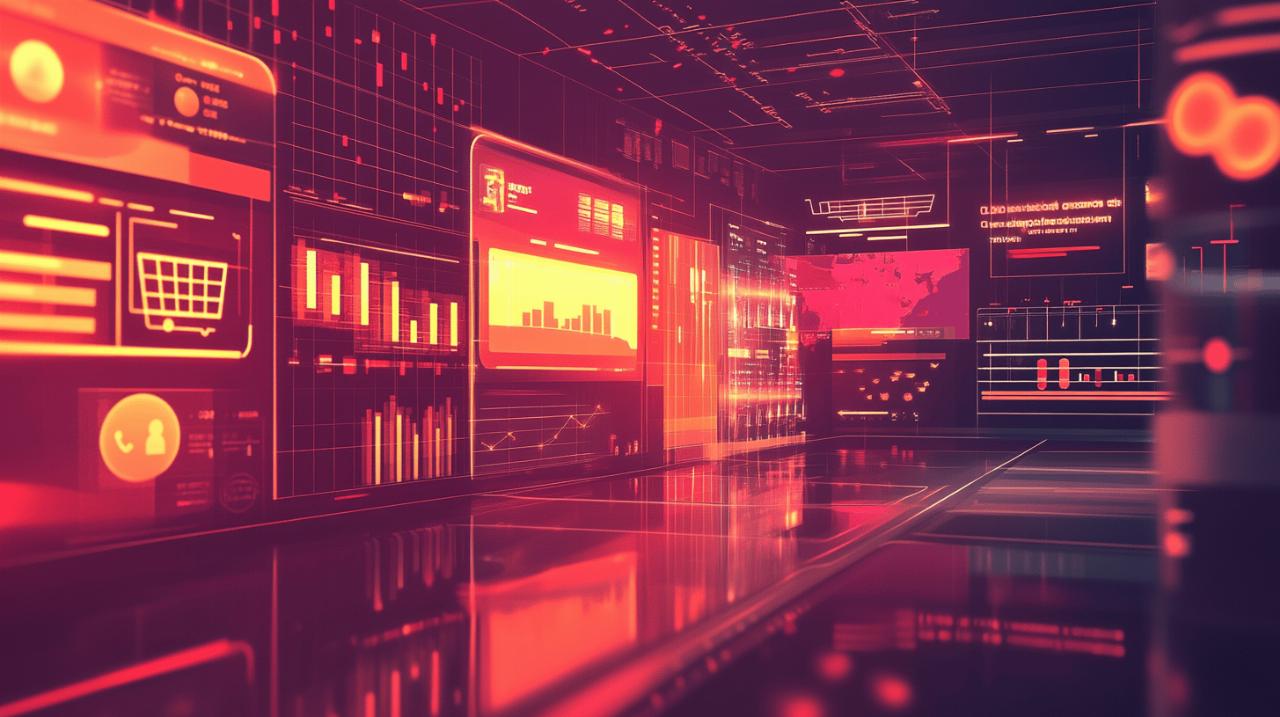Heat maps have revolutionized how B2C online stores analyze user interactions, providing visual data that directly translates into improved conversion rates. These powerful analytical tools use color gradients to represent user activity, giving store owners unprecedented insight into customer behavior patterns across their digital storefronts.
Understanding user behavior through heat maps
Heat maps transform complex user interactions into easily digestible visual data that reveals exactly how customers engage with your online store. By displaying areas of high interaction in warmer colors (reds and oranges) and low-engagement areas in cooler tones (blues and greens), these visualization tools eliminate guesswork from website optimization. With ecommerce conversion rates typically hovering around 2.5-3%, and experts suggesting that a 3%-plus rate should be the baseline goal, heat maps provide the insights needed to reach these targets.
Tracking visitor mouse movements and clicks
Click maps, move maps, and scroll maps each offer unique perspectives on visitor behavior. Click maps highlight exactly where users are clicking, revealing if your CTAs are performing as intended. Move maps track cursor movements across pages, indicating areas that capture attention even without clicks. Scroll maps show how far down pages visitors travel, helping identify if crucial content gets seen. The insights gained from these tracking methods can lead to significant improvements, as seen with Trampoline Plezier, which increased clickthrough rate from 22% to over 33% by adding a CTA button at the top of each blog post after analyzing heat map data. For comprehensive visual behavior analysis using eye-tracking and neuromarketing approaches to boost conversion rates, learn more on puntolog.com where advanced heat mapping techniques are discussed.
Identifying popular vs. ignored page elements
Heat maps excel at highlighting both engagement hotspots and dead zones on your pages. This visual contrast makes it immediately apparent which elements draw attention and which go unnoticed. Armed with this knowledge, B2C store owners can make strategic decisions about repositioning critical elements to high-engagement areas, simplifying navigation paths, or redesigning pages entirely. For mobile optimization, which is increasingly vital as mobile ecommerce now represents over 30% of all ecommerce spending in the US and over 70% globally, heat maps are invaluable. The Good agency used heat maps to analyze Swiss Gear's mobile experience, resulting in an 8% decrease in bounce rate and an 84% increase in time on site after simplifying the mobile menu based on heat map insights.
Transforming heat map insights into conversion improvements
Heat maps represent a powerful visual analytics tool for B2C online stores seeking to boost their conversion rates. These color-coded graphical representations show exactly how customers interact with website elements, revealing patterns that traditional analytics might miss. With average B2C conversion rates hovering around 2.1%, and ideal rates between 2% and 5%, heat maps provide actionable insights to push your store toward the higher end of this spectrum. By visualizing clicks, scrolls, and mouse movements, heat maps transform raw user behavior into strategic optimization opportunities.
B2C online stores can leverage three main types of heat maps: click maps showing where users click most frequently, scroll maps indicating how far visitors navigate down a page, and move maps tracking cursor movement patterns. These visual tools complement traditional analytics platforms like Google Analytics by adding contextual understanding to numerical data. For instance, Trampoline Plezier used heat map insights to increase their clickthrough rate from 22% to over 33% by strategically repositioning CTA buttons, resulting in a 50% increase in clicks.
Optimizing product placement based on visual attention
Heat maps reveal exactly where visitors focus their visual attention, allowing B2C stores to strategically position high-value products and critical conversion elements. By identifying high-engagement zones on your pages, you can place your most profitable products or strongest offers where users naturally look. This neuromarketing approach, which leverages eye-tracking patterns revealed through heat maps, creates more intuitive shopping experiences aligned with how customers actually browse.
When redesigning product pages based on heat map data, focus on placing key information and high-quality images in the areas receiving the most attention. One successful implementation came from Turum-burum, who used heat maps on Intertop's website and discovered users were struggling to find relevant products. By adding filtering options in highly visible areas identified through heat mapping, they increased their ecommerce conversion rate by over 55%. Similarly, with mobile commerce representing over 30% of US ecommerce spending and over 70% globally, optimizing mobile product placement based on heat map data has become essential. The Good agency demonstrated this by using heat maps to simplify Swiss Gear's mobile menu, decreasing bounce rates by 8% while increasing time on site by 84%.
Streamlining checkout processes using interaction data
Cart abandonment represents one of the most significant conversion obstacles for B2C online stores. Heat maps offer critical insights into why customers abandon carts by revealing hesitation points, confusing elements, or distracting features during checkout. By analyzing click maps and move maps during each checkout step, you can identify unnecessary fields, confusing navigation patterns, or problematic design elements that create friction.
Using heat map data to streamline checkout flows yields measurable results. Epiphany agency applied heat map insights to Time4sleep's mobile checkout process, implementing a more intuitive filtering system that boosted mobile conversion rates by 63%. Heat maps can also reveal bugs and usability issues that might otherwise go unnoticed. When combined with A/B testing, these insights become even more powerful – you can implement two different checkout versions and use heat maps to understand not just which version performs better, but exactly why it performs better by revealing specific interaction patterns. This data-driven approach to checkout optimization directly addresses cart abandonment issues while enhancing overall user experience. With 84% of clients considering transparency a key element in their purchase decisions, creating clear, frictionless checkout processes based on heat map data builds trust while increasing conversions.

